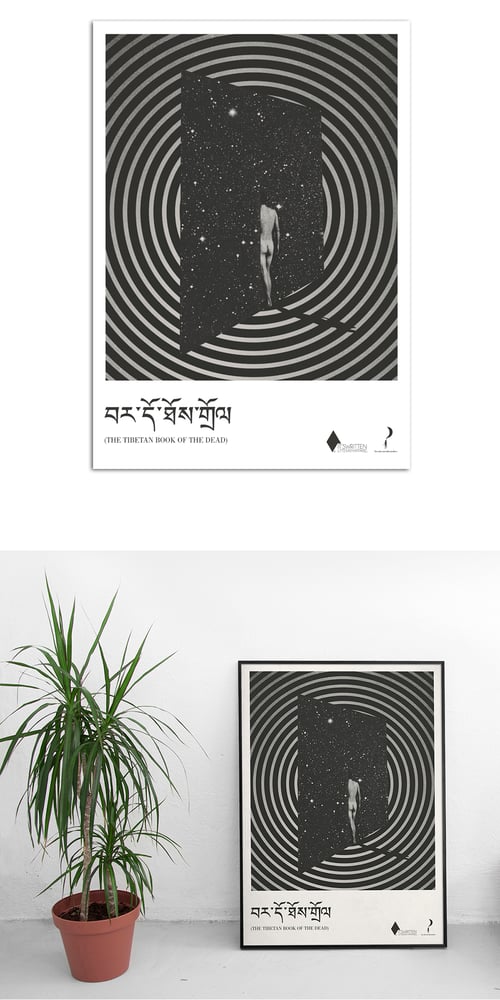Tibetan book of the dead
25,00 €
*Impresión en papel fotográfico mate de 300 grs.
*Marco no incluido.
*Las láminas se envían protegidas con un sobre de plástico y dentro de un tubo de cartón rígido para evitar desperfectos.
*Todas las láminas tienen un borde blanco para facilitar el enmarcado
*Printed on 300 grams fine photographic paper
*All prints come unframed
*The prints are wrapped in a plastic envelope before being placed in a sturdy shipping tube for delivery.
*All prints come with a white border.
✎ Literary Art: ABOUT TIBETAN BOOK OF THE DEAD
When you die, you don’t dissapear: or so it says the Tibetan Buddhist tradition. Your consciousness continues its way, moving on to another state known as “intermediate state” between your past life and the next one: your reincarnation.
One might be easily impressed, even overwhelmed by the complex imaginary found within the origins and many subsequent branches of the Buddhist texts, those same texts that arrived to the western world as The Tibetan Book of The Dead
The attention to nuances is maybe the main feature of the Buddhist philosophy, especially in comparison with other western religions. Buddhism is not about radical contrasts: when we die, why should we have to be judged and be sent to either paradise or hell without other intermediate options? Why should everything be either black or white, win or lose, peace or guilt? The Tibetan Book Of The Dead is a brilliant way of proving this wrong.
lacabezaenlasnubes' everlasting illustration inspired by the reading of Tibetan Book Of The Dead depicts that exact moment where one remains between the two lives: the past one and the next. Our singular, particular life against the Universe… Are those rings in the piece the karmic wheel? We might find an answer while reading The Tibetan Book Of The Dead. Or maybe the answer resides within ourselves and shall be revealed at the end of our current life (among many others we’ve lived and those yet to come).
✎ Literary Art: ACERCA DEL 'LIBRO TIBETANO DE LOS MUERTOS'
Al morir, según la tradición del budismo tibetano, no desaparecemos del todo. Tu consciencia sigue su camino, y entra en un estado intermedio entre la vida pasada y su futuro paradero, es decir, su próxima reencarnación.
A partir de ahí, si analizamos los orígenes y las múltiples ramificaciones del célebre texto del budismo tibetano que en Occidente conocemos como Tibetan book of the dead, no nos será difícil vernos abrumados (y quedarnos fascinados al mismo tiempo) por su complejidad y brutal imaginario.
Si algo define al pensamiento budista y lo diferencia de otras religiones occidentales es su atención a los matices, en vez de a los extremos. Al morir, ¿por qué tenemos que ser juzgados y enviados o bien al paraíso o bien al infierno? No todo es blanco y negro, ni ganar o perder, ni sentirse aliviado o vivir libre de culpa. El Libro tibetano de los muertos es un brillante ejemplo de ello.
En su inmortal ilustración de nuestra colección conjunta Literary Art, lacabezaenlasnubes capta justamente el momento en el que cruzamos ese limbo entre ambas vidas. Adentrándonos en un nuevo universo, una nueva vida. ¿Serán los círculos que rodean al hombre de la ilustración una representación de la rueda kármica?
Quizás encontremos la respuesta en El libro tibetano de los muertos. O quizás esté dentro de nosotros y lo descubramos al final de esta vida (puede que una entre muchas otras que hemos tenido y están por venir).
www.lacabezaenlasnubes.com
www.itswritten.eu


